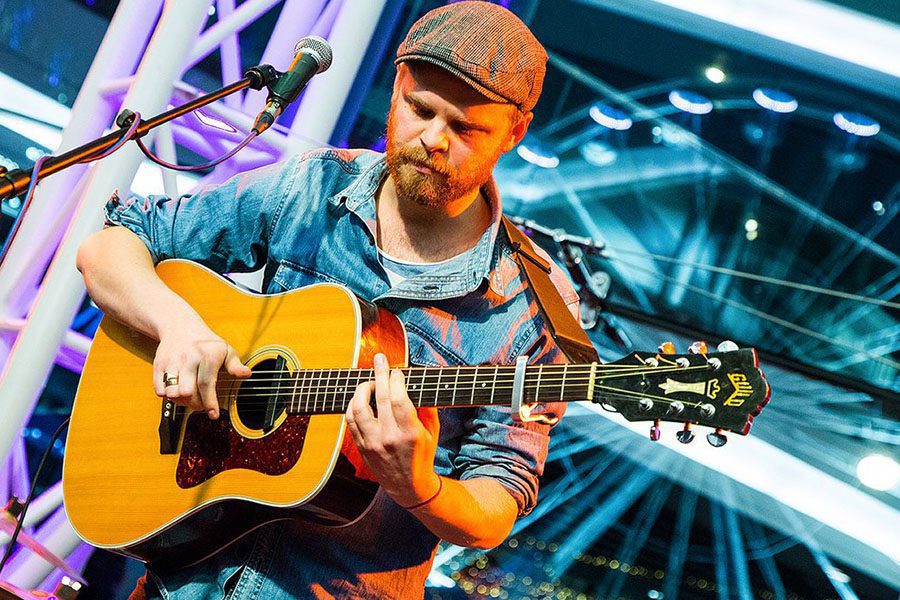Film music must supply what the actors cannot say. The music can give to an audience their feelings. It must really convey what the word cannot do.
Bernard Herrmann
In the first part of this guest blog series on teaching film music, our content writer, Patrick Gazard, shares exemplar listening, key features to include and composers not to miss.
Approaching the teaching of film composition
No matter what type of school you teach in, it’s likely that one of the units you offer at KS3 will be Film Music. The following are my thoughts on teaching students how to compose for images. This could easily be stretched and revisited over two or even three half term units, quite possibly spread across the whole of KS3.
As always with any ‘Top Tips’, some will be relevant to your situation and others will be wholly unsuitable, but I hope you will find some inspiration and perhaps a few new twists on what you do already.
History, context and research
All successful film composers have an extensive and eclectic knowledge of many different styles of music, so it is only right that our students should start with at least a sense of the history of film composition. Film music has evolved over time, albeit around 100 years only, so don’t be scared to cover a bit of background – it’s hard to understand John Williams’ use of the leitmotif without hearing some Korngold, Steiner and Rosza (and Wagner of course!).
Here are some possible angles of approach:
Silent movie piano/ organ
Contemporary composers are still writing in this style, for example: Kieran White and Neil Brand. The latter is a regular silent film accompanist at London’s National Film Theatre and has composed new scores for two recently restored films from the 1920s: The Wrecker and Underground.
Classic Hollywood of the 1930’s and 40’s
Everyone should hear Max Steiner’s theme for Gone With the Wind, Erich Korngold’s opening title from ‘The Sea Hawk’ or Miklos Rosza’s score for ‘Ben Hur’…
The ‘American sound’
Without the influence of Aaron Copland we would not have the classic western score (Elmer Bernstein’s The Magnificent Seven) or the mournful solo trumpet line (James Horner’s Apollo 13). To illustrate this important point, have a listen to Appalachian Spring and the opening of A Lincoln Portrait. Ask students to compare the two scores and identify the musical features that contribute to the ‘American sound’:
Compositional strategy: The Classic 4*
1. Leitmotifs
The use of leitmotifs is central to many film scores – we can study the techniques of Wagner, through Korngold and Steiner, and then onto John Williams (Star Wars/ Harry Potter), Howard Shore (The Lord of the Rings); John Barry (James Bond), Michael Giacchino (Up/ Inside Out). Try not to focus too much on the leitmotifs themselves, more the way in which these themes are changed and developed as the characters undergo different experiences: leitmotifs as ‘storytellers’. In many ways this can be seen as an old-fashioned, dated approach, but it has its merits, especially with franchises: watch this thought-provoking video essay from ‘Inside the Score’…
2. Mickey-mousing
Mickey-mousing is a technique that synchronises the accompanying music with the onscreen action. From Disney’s Silly Symphonies (Carl Stalling) and Tom and Jerry (Scott Bradley) through to Police Academy and Wallace and Gromit (Julian Knott), there are plenty of examples to demonstrate this technique. Alan Silvestri’s pastiche score to Who Framed Roger Rabbit, especially the opening sequence, is another great example of this style.
3. Cellular composition
Repetitions of short rhythmic and melodic cells, as exemplified by Bernard Herrmann (see the respective opening credits for Hitchcock’s Vertigo, North by North West and Psycho) are a good starting point for a student composing task – ask students to choose four or five pitches and to create a motif, This can then be used as the basis for a longer composition task when exploring development techniques.
4. Generic tension and drama
Hans Zimmer (Interstellar/ Dunkirk) influenced contemporaries such as John Powell (The Bourne Trilogy) in building up musical tension. Play the examples shown below in class and ask students to discuss how the composers have successfully created tension.
There are others of course, notably the influence of pop music writers (Trent Reznor,/ Atticus Ross (The Social Network) : Jonny Greenwood) and also the ongoing dominance of sound design, exemplified by Hildur Gudnadottir’s recent ‘real sound’ score for ‘Chernobyl’:
Versatility
The most successful film and television composers must be able to turn their hand to anything: in the case of Michael Giacchino, for every Incredibles there is Star Trek: Into Darkness, and John Williams is far more than Star Wars, Harry Potter and ET – try the jazzy opening titles of the Adventures of Tintin or Catch Me If You Can. Playing students a variety of styles by the same composer, illustrates this exact point and can stimulate some interesting discussion around composer identity and composing to a brief.
I hope you have found this post helpful and enjoyed exploring different aspects and features of film music. In Part 2 I’ll share some student composition task suggestions as well as further exemplar listening.






